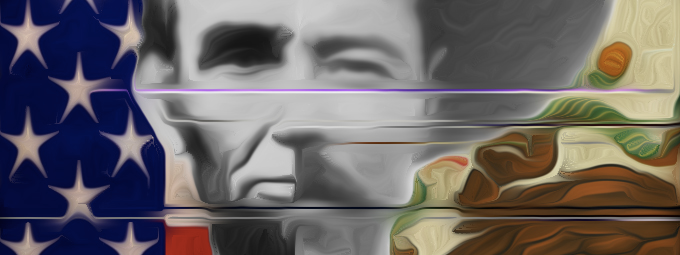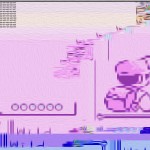by Marshal Davis
I like to make art that is universal, surpassing the walls of time, culture, and good and evil. Glitch art presented me with a simple way to create art that would reach through these barriers.
I started glitch art by following the practicum of making a glitched image. On the most basic level, this practice entails randomly altering the code that makes up a digital image to create an abstract reproduction. But something about this unruly genesis didn’t sit well with me, I felt like the images lacked a defining instrumentation that would make it mine.
Then I wondered, “What if I forced glitch art back into a classical medium?” I took a few of my favorite glitch art images and tweaked them until their colors swirled and smoothed to have this type of Van Gogh feeling (see “Footing” and “Foreign Affairs”). I was pleased with the result and adopted it for all future images, but still felt that the images lacked a piece of me.
My second approach to assert control over the glitch art was to select images that were significant to me. One example of my second approach was a screenshot of the Pokémon game. (see “Infinite Rare Candy”). The third method to control the madness was to first photoshop an image, and then glitch my already altered image (see “Abraham Villa”).
The final method developed to impose control over the glitch art. I would find symbols or patterns in the image’s code and replace them with alternate coding. My favorite example was a picture of Adolf Hitler. I found all instances of the code “h8” (hate) and replaced it with “<3” (heart or love). I also sought out codes like “fr” (fear) or “evl” (evil) and replaced them with other random codes from happy images. The result was a piece that I call “<3”. This method preserved the organic nature of glitch art while allowing me to express something that I felt.








